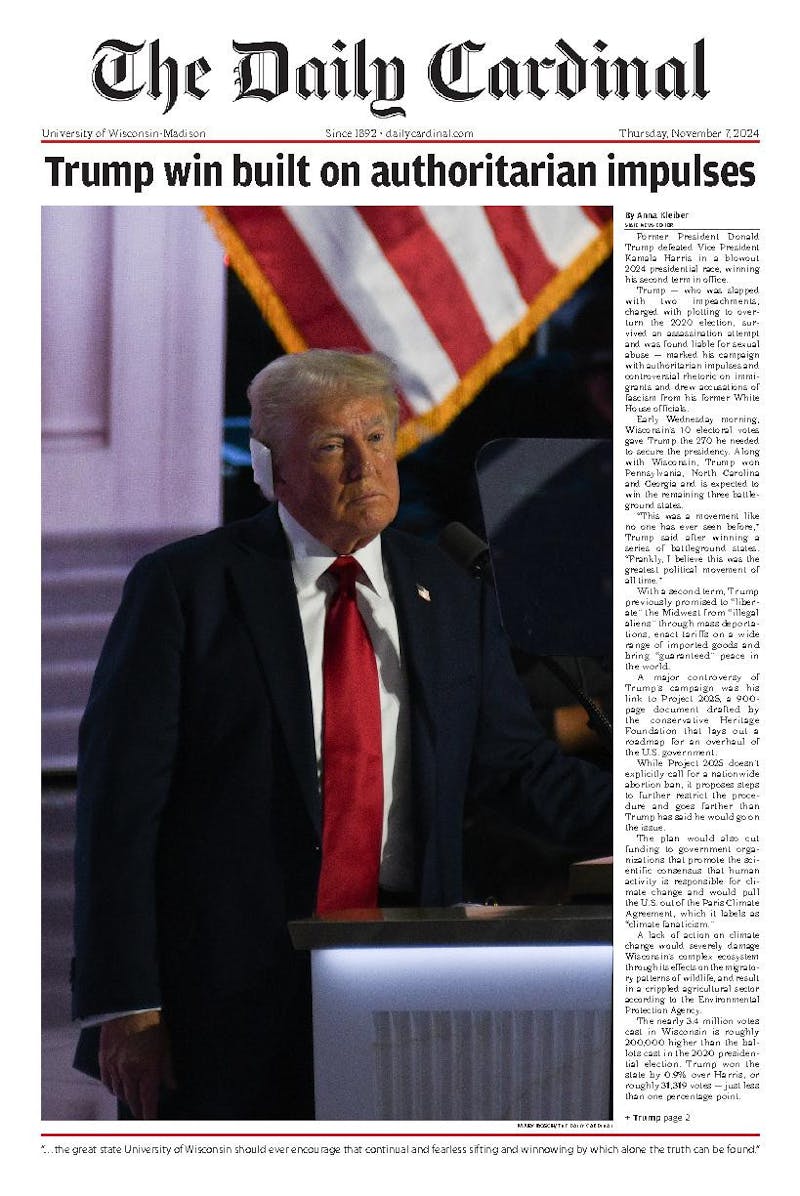This probably was not the Northwestern team Barry Alvarez was expecting when Wisconsin slated its homecoming for this weekend's action against the Wildcats.
The surging 'Cats have won their last two games in heart-stopping fashion, defeating Indiana two weeks ago 31-24 in overtime. In the previous game, Northwestern knocked off then-unbeaten Ohio State 33-27 in another game that went past regulation. The Wildcats had a bye last week.
Northwestern has shown a knack for staying in games until the last minutes this year. Three of its six games went into overtime, and all but one, a blowout loss at Minnesota, were decided by two scores or fewer. This is hardly the easy win most schools want for their homecoming game.
Against the Wildcats, the Badgers' defense will face an offense similar to the one they faced last week against Purdue. In sharp contrast to Wisconsin's style of power football, Northwestern Head Coach Randy Walker runs a spread offense.
The spread offense uses mainly three and four wide receiver sets, forcing the defense to cover the entire width of the field. As a result, defenses are forced to choose between playing single coverage on the wideouts or providing safety help at the risk of weakening their run defense up the middle. When a defense plays single coverage on its receivers, Northwestern utilizes quick slants to the slot receivers and short routes to march the ball downfield.
An integral part of this schemeand the reason for Northwestern's early success is junior quarterback Brett Basanez. Basanez is amongst the top 10 in the nation in total offense, passing for 264 yards a game, and rushing for almost 40. He's mobile enough to get positive yardage with his legs and has the strong arm required to get the ball to his receivers before opposing defenses can jump their short routes.
While both these attributes make him a dangerous quarterback, Basanez's best asset is his intelligence. Basanez is one of the best at making reads at the line of scrimmage. If he sees a safety cheating up to defend the run, Basanez will audible to the inside slant, a short route that can result in a big play if there's no safety there to make the tackle.
\He's at least as mobile [in comparison to Purdue quarterback Kyle Orton], but he's used in a different way ... all those things are part of their arsenal,"" Badger Head Coach Barry Alvarez said. ""They want to get him on the edge. They want to give him a run-pass option and get him out into space where he can use his feet.""
One beneficiary of this audible- heavy system is senior running back Noah Herron, who was named the Big Ten Offensive Player of the Week against Indiana two weeks ago. Herron has great speed and agility, which makes him deadly in the open field. By spreading the field and using the pass to set up the run, Herron rarely gets hit behind the line of scrimmage, giving him enough space to create something with his legs.
""You see him split so many defenses; he's a north-and-south runner,"" Alvarez said. ""He's a downhill runner. He's big and powerful. He can run through tackles. He makes things happen. He's key to their offense.""
While the Wildcats have played a lot of close games, it is their offense and not their defense that has kept them in games. Their defense ranks 91st among Division 1-A teams in total defense and is a paltry 112th against the pass, allowing 284 yards per game through the air.
The defense is lead by junior linebacker Tim McGarigle and senior strong safety Dominique Price. McGarigle leads the team with 66 tackles, 51 of which are solo. Sophomore safety Bryan Heinz, who is second on the tackles list, has 47 total tackles. Price may be the best in the Big Ten at providing run support. He has one sack and four tackles for loss on the season. The senior is third on the team with 46 tackles and may be the Wildcats' most physical player. Any team looking to run against Northwestern has to know where those two players are at all times.
Northwestern has a history of being an upset team, especially against the Badgers. Last year the Badgers were still riding high off a win over Ohio State two weeks before and were looking to turn things around after a close game against Purdue. However, the Badgers had their ground game severely contained as well as an inefficient aerial attack, and suffered its second loss in a row, beginning a downturn for the Badgers. In 2000, when the Wildcats were co-Big Ten champs, they defeated the Badgers in a double-overtime victory, 47-44.





